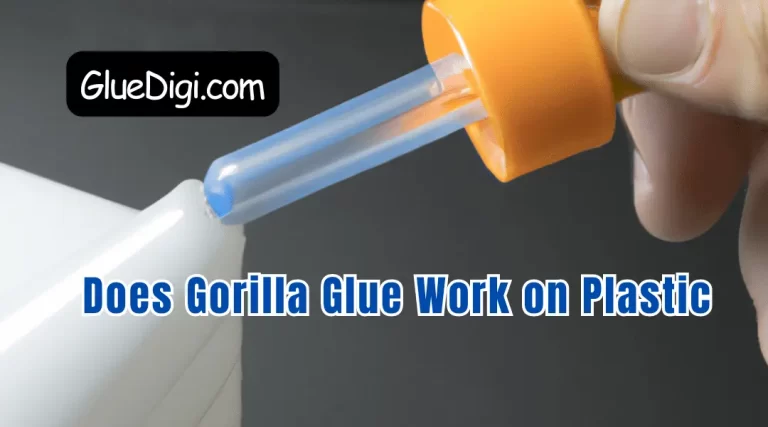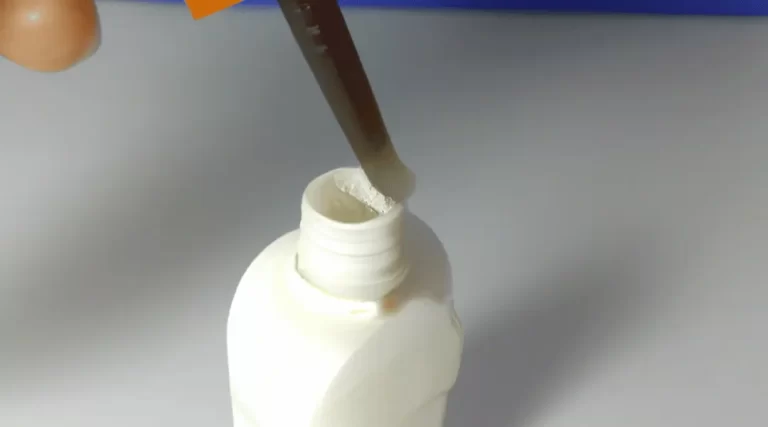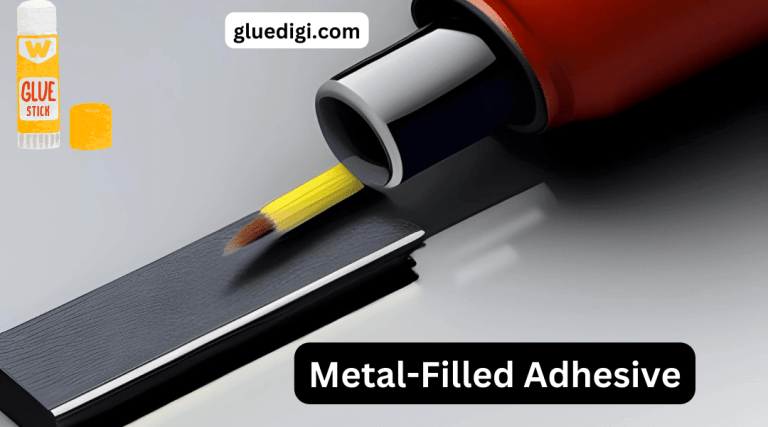Fiberglass adhesive is a versatile bonding material that has gained popularity in various industries. It is a type of adhesive that is specifically designed to bond fiberglass materials, which are commonly used in construction, automotive, and marine applications.
Fiberglass adhesive is typically composed of two parts – a resin and a hardener – which are mixed together to create a strong and durable bond.
The uses of fiberglass adhesive are numerous, and it is especially useful in applications where high-strength bonding is required. This type of adhesive is commonly used in the construction industry to bond fiberglass panels to walls, floors, and ceilings.
It is also used in the automotive industry to bond fiberglass body panels, as well as in marine applications to bond fiberglass hulls and decks. Despite its numerous benefits, fiberglass adhesive also has its drawbacks, which we will discuss in this article.
What is Fiberglass Adhesive?
The material is a highly versatile bonding agent that has gained popularity due to its ability to adhere to a wide range of surfaces, making it a valuable tool for various applications in construction and manufacturing industries.
Fiberglass adhesive properties include its ability to bond with materials such as metal, plastic, wood, and concrete, making it an ideal adhesive for bonding dissimilar substrates.
It is a two-part epoxy adhesive that is mixed together before application and is cured by either heat or time.
The application techniques for fiberglass adhesive vary depending on the type of surface to which it is being applied and the specific application requirements.
The adhesive is often applied with a brush or roller, but it can also be sprayed or injected into tight spaces.
Fiberglass adhesive has a high strength-to-weight ratio, which makes it an ideal choice for bonding lightweight materials.
It is also resistant to water, chemicals, and temperature changes, which makes it a popular choice for applications where durability and longevity are required.
The next section will discuss the various uses of fiberglass adhesive in more detail.
Uses of Fiberglass Adhesive
Fiberglass adhesive has become an essential material in various industries due to its unique properties.
The automotive industry uses fiberglass adhesive for repairing car bodies, while the marine industry uses it for boat construction and repair.
On the other hand, the construction industry uses fiberglass adhesive for bonding and reinforcing building materials.
The versatility and strength of this adhesive make it an indispensable tool in modern industries.
Automotive Industry
The automotive industry has shown a significant demand for materials that offer durability and strength, leading to the exploration of new adhesive solutions. Automotive repair shops require adhesives that can withstand high temperatures, impacts, and vibrations.
Fiberglass adhesive has become a popular choice for automotive bonding because of its ability to bond metal, plastic, and composite materials. It is also resistant to water, chemicals, and UV rays, making it an ideal choice for exterior automotive parts. Fiberglass bonding techniques, such as wet layup, vacuum bagging, and resin infusion, offer different bonding options depending on the specific application.
However, some drawbacks of fiberglass adhesive include its potential for skin and respiratory irritation during application and its inability to bond to certain materials like silicone and polyethylene. Despite these limitations, the automotive industry continues to utilize fiberglass adhesive for its durability and strength.
With that said, fiberglass adhesive is also widely used in the marine industry for its ability to withstand harsh marine environments.
Marine Industry
The marine industry has also found innovative uses for materials that offer durability and strength, leading to the exploration of new bonding solutions. Fiberglass adhesive has become a popular choice for marine vessels due to its ability to bond strongly with fiberglass, a commonly used material in boat construction. Its uses range from minor repairs to entire hull reconstructions.
Some of the advantages of using fiberglass adhesive in the marine industry include its resistance to water damage and its ability to withstand harsh weather conditions. However, it also has some drawbacks, such as its high cost and the need for proper ventilation during application. Despite these limitations, the benefits of using fiberglass adhesive for fiberglass repair in marine vessels make it a useful solution for boat owners and manufacturers.
In the following section, we will explore how the construction industry also benefits from this versatile material.
Construction Industry
In the construction industry, materials that provide durability and strength are highly valued, and innovative bonding solutions have emerged to meet these demands.
Fiberglass adhesive is one such solution that has revolutionized construction techniques. This adhesive is a two-part epoxy system that combines a resin with a hardener to create a tough bond that is resistant to water, chemicals, and heat.
Fiberglass bonding methods are used in a variety of construction applications, including the assembly of composite structures, the repair of damaged concrete, and the installation of insulation. It is also used in the manufacturing of boats, aircraft, and other vehicles.
The adhesive can be applied to a range of surfaces, including metal, wood, and concrete, making it highly versatile. The advantages of fiberglass adhesive are numerous and will be explored in the subsequent section.
Advantages of Fiberglass Adhesive
One notable benefit of fiberglass adhesive is its ability to withstand harsh environmental conditions, as demonstrated by a study showing that it maintained its strength even after exposure to extreme temperatures and humidity levels. This makes it an ideal bonding agent for applications in the construction industry, marine industry, and automotive industry.
In addition, fiberglass adhesive is lightweight, providing a strong bond without adding unnecessary weight to the final product. It is also resistant to chemicals and corrosive substances, making it a popular choice for applications in which the bond will be exposed to these types of materials.
Finally, fiberglass adhesive is easy to use, requiring no special equipment or training to apply. Despite these advantages, there are also some potential disadvantages to consider, including its cost and the fact that it may not be as strong as other types of adhesives in certain applications.
Disadvantages of Fiberglass Adhesive
Fiberglass adhesive does have several disadvantages that should be considered before using it.
Firstly, it can be a messy application process, which may lead to frustration and wasted materials.
Secondly, skin irritation is a potential side effect of working with the adhesive, making it important to take necessary precautions when handling it.
Finally, once the adhesive has cured, it can be difficult to remove, which may cause problems if any mistakes were made during the application process.
These factors should all be taken into account when deciding whether or not to use fiberglass adhesive.
Messy Application
The application process of fiberglass adhesive can be challenging and result in a mess if not handled carefully, which may have a significant impact on the overall quality of the final product. Clean up techniques are crucial to eliminate any excess adhesive before it hardens, which can be difficult to remove once it sets. Additionally, it is essential to wear gloves and protective clothing to avoid skin irritation caused by exposure to the adhesive.
Product alternatives, such as epoxy and cyanoacrylate, may be easier to apply and require less clean up. However, fiberglass adhesive remains a popular choice for its durability and strength in bonding materials.
The next subtopic will explore the potential skin irritation caused by fiberglass adhesive.
Skin Irritation
Skin irritation is a common concern associated with the application of certain bonding agents, including fiberglass adhesive. While this adhesive has numerous benefits, such as strength and durability, users should be aware of the potential risks associated with skin exposure.
Prevention measures, such as wearing protective gloves and clothing, can help reduce the likelihood of allergic reactions or irritation. It is also important to follow the manufacturer’s guidelines for use and to avoid contact with skin as much as possible.
In the event of skin exposure, immediate washing with soap and water can help mitigate any potential effects. It is worth noting that fiberglass adhesive can be difficult to remove once cured, so it is important to take preventative measures to avoid skin contact in the first place.
Difficult to Remove Once Cured
Removing cured fiberglass adhesive can be a challenging task, emphasizing the importance of taking preventative measures to avoid skin contact during the application process.
Once the adhesive cures, it can be incredibly difficult to remove, and attempting to do so can result in damage to the surface it was applied to.
Proper disposal of any excess or unused adhesive is crucial to prevent it from hardening and becoming a safety hazard.
To avoid the difficulties associated with removing cured fiberglass adhesive, it is recommended to use only the necessary amount of adhesive and to clean any excess immediately after application.
Additionally, using protective gloves and clothing during application can help prevent skin contact and make cleanup easier.
It is important to take these precautions to ensure the safe and effective use of fiberglass adhesive.
Safety Precautions when Using Fiberglass Adhesive
When utilizing fiberglass adhesive, it is crucial to exercise proper caution to ensure one’s well-being. This is because the adhesion process can involve potentially hazardous materials that require careful handling to avoid any mishaps.
It is important to wear appropriate safety equipment such as gloves, goggles, and a respirator to protect oneself from the fumes and dust that may be released during the curing process. Moreover, proper ventilation must be ensured to prevent the accumulation of harmful vapors that can lead to dizziness, nausea, or even more severe health issues.
In addition, it is recommended to avoid skin contact with the adhesive and to work in a well-lit and organized area to minimize the risk of accidents. By following these safety precautions, one can work with fiberglass adhesive effectively and efficiently without compromising one’s safety.
Moving to the conclusion, it is important to note that despite the potential risks associated with the use of fiberglass adhesive, it remains a versatile and reliable bonding solution for a wide range of applications.
Conclusion
In summary, fiberglass adhesive is a versatile and durable material that can be used in a wide range of applications for both industrial and household purposes. Its pros include high strength, resistance to moisture and chemicals, and easy application. However, its cons include its potentially harmful fumes and the need for proper safety precautions when handling it.
In conclusion, fiberglass adhesive is a valuable tool for many tasks, but it is important to use it safely and responsibly to avoid any negative health effects.
Summary of Pros and Cons
A comprehensive evaluation of the advantages and disadvantages of fiberglass adhesive suggests that it is imperative to weigh the benefits and drawbacks before making an informed decision on its application.
On the one hand, fiberglass adhesive is a cost-effective solution compared to other adhesives. It is also known for its strength and durability, making it ideal for applications that require high tensile strength.
However, the downside of using fiberglass adhesive is that it can be challenging to apply, particularly for those who have no prior experience. Furthermore, it can emit fumes that can be harmful to one’s health if proper safety measures are not taken.
Despite its drawbacks, the benefits of fiberglass adhesive make it an excellent option for those who require a cost-effective and robust adhesive solution.
In the subsequent section, we will delve into some final thoughts on fiberglass adhesive.
Final Thoughts on Fiberglass Adhesive
The concluding remarks regarding the application of fiberglass adhesive emphasize the need for a thorough risk assessment and safety protocol, as this type of adhesive can cause skin irritation and respiratory issues if not handled properly. However, its benefits in terms of strength and cost-effectiveness make it a popular choice in various industries.
When compared to other adhesives, fiberglass adhesive stands out for its ability to bond to a wide range of materials and its resistance to moisture and chemicals.
Despite its potential drawbacks, the pros of using fiberglass adhesive outweigh the cons, making it a reliable and efficient solution for bonding fiberglass, plastics, metals, and other materials.
Conclusion
Fiberglass adhesive is a type of adhesive that is used to bond fiberglass materials together. It is a popular choice in construction, automotive, and marine industries due to its strength and durability. The adhesive is made up of two components, resin and hardener, which are mixed together to form a strong bond.
The uses of fiberglass adhesive are vast, ranging from repairing boats and cars to creating sculptures and models. It is also commonly used in construction for bonding fiberglass insulation and panels.
The advantages of fiberglass adhesive include its strength, durability, and resistance to water and chemicals. However, there are also some disadvantages, such as its high cost and the need for proper safety precautions when using it.
In conclusion, fiberglass adhesive is a powerful adhesive that is widely used in various industries due to its strength and durability. Its uses are vast, and it is an effective solution for bonding fiberglass materials together. However, it is important to note that safety precautions must be taken when using fiberglass adhesive due to its harmful chemicals. Overall, the benefits of using fiberglass adhesive outweigh the disadvantages, making it a popular choice for bonding fiberglass materials together.
As a rhetorical question, have you ever wondered what the world would be like without fiberglass adhesive and its countless applications?





